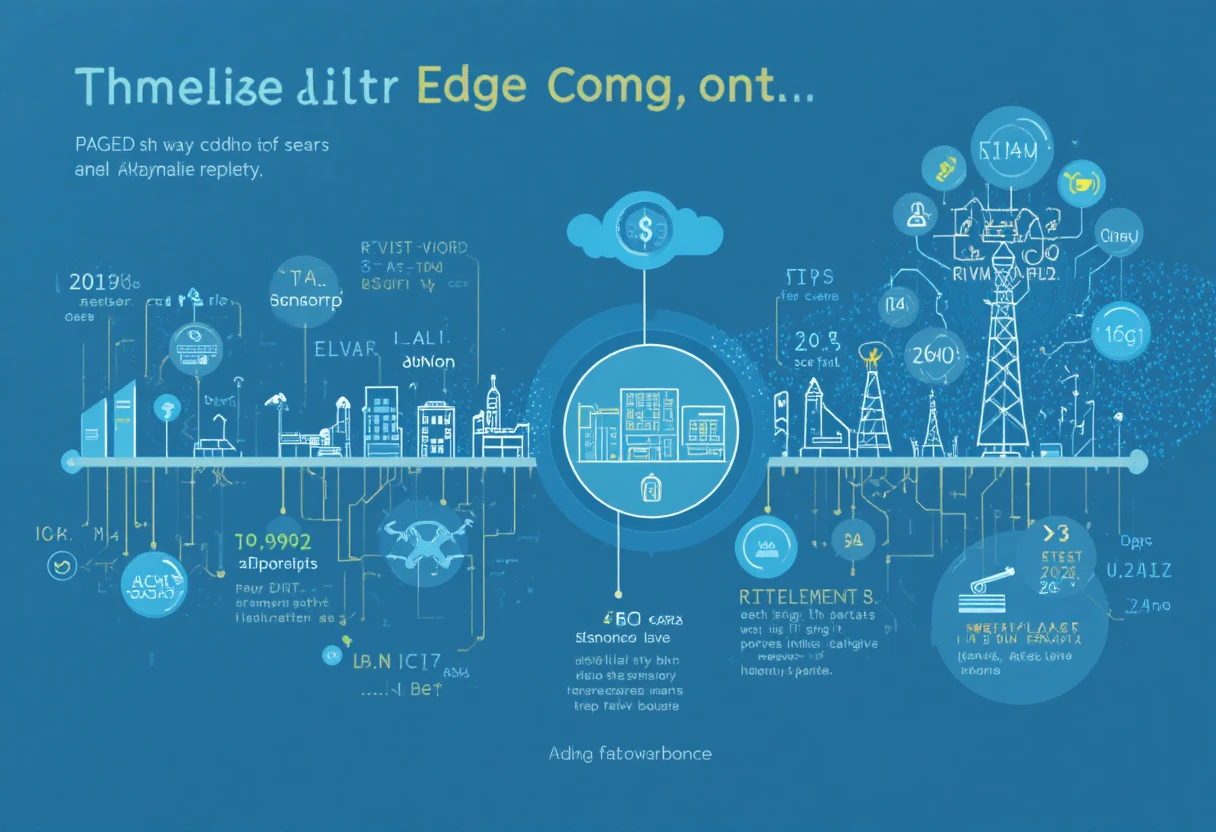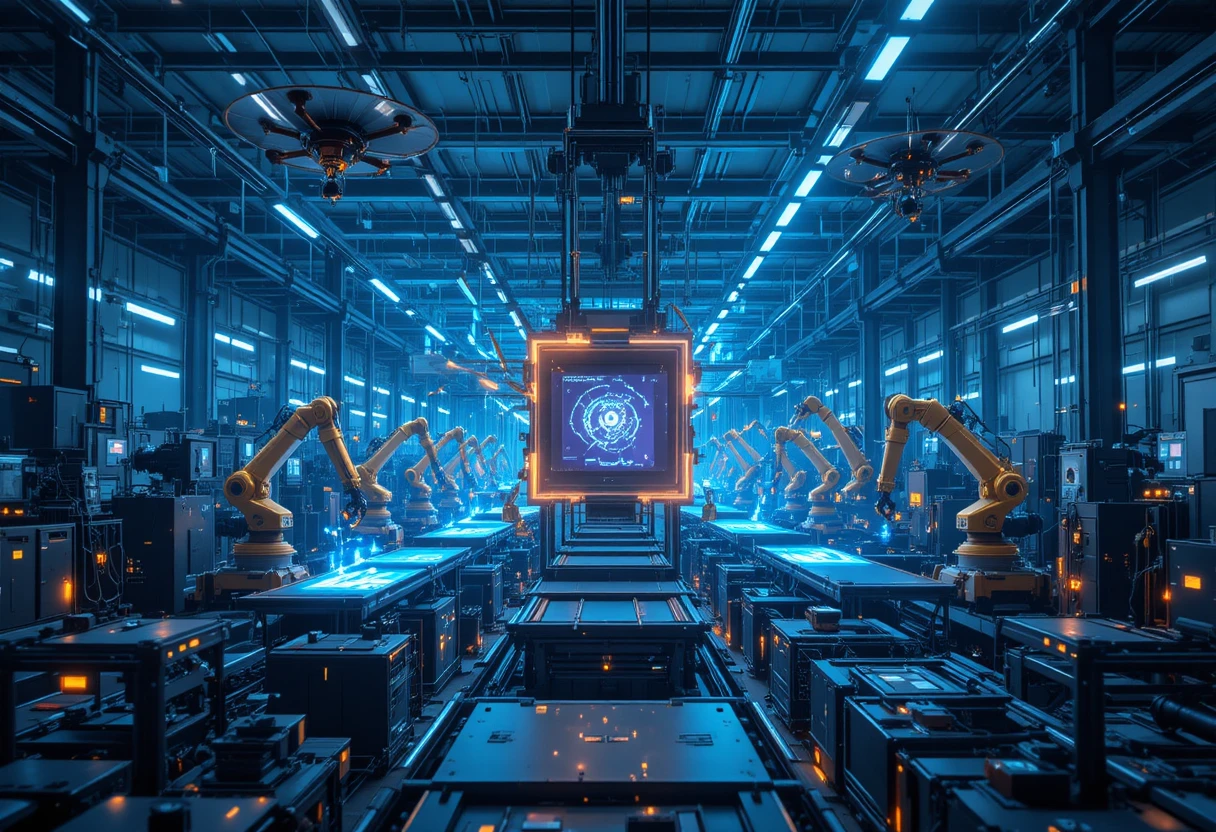Edge computing represents a paradigm shift in data processing, bringing computation and storage closer to the source of data generation rather than relying solely on centralized cloud servers. In an era dominated by the Internet of Things (IoT), 5G networks, and artificial intelligence (AI), edge computing minimizes latency, enhances real-time decision-making, and optimizes bandwidth usage. As of October 2025, this technology is pivotal in enabling applications from autonomous vehicles to smart cities, where split-second responses are critical. The global edge computing market is experiencing explosive growth, with IDC estimating spending to reach nearly $261 billion in 2025, reflecting a compound annual growth rate (CAGR) of 13.8%. This surge is driven by the need to process the massive data volumes generated at the “edge” of networks—devices like sensors, cameras, and smartphones—without the delays inherent in cloud transmission.
At its core, edge computing decentralizes data handling, allowing devices to perform computations locally or at nearby nodes, such as base stations or micro data centers. This contrasts with traditional cloud computing, where data travels to distant servers for analysis. The benefits include reduced latency (often below 20 milliseconds), improved security through localized data processing, and cost savings on bandwidth. However, it also introduces complexities in management and integration. In 2025, edge computing is intertwined with AI, enabling “edge AI” where machine learning models run directly on devices for instant insights. This post explores the history, technologies, applications, trends, impacts, future prospects, and challenges of edge computing, providing a comprehensive view of its role in shaping a connected world.
History and Evolution of Edge Computing
Early Beginnings
The roots of edge computing can be traced back to the 1990s, when content delivery networks (CDNs) emerged to address the limitations of centralized web servers. Akamai Technologies pioneered this in 1998 by deploying servers closer to users to reduce latency in delivering web content and videos. At the time, the internet was grappling with congestion from growing online traffic, and CDNs decentralized data caching, foreshadowing modern edge principles. This era focused on content distribution rather than computation, but it laid the groundwork for processing data nearer to end-users.
In the early 2000s, the rise of mobile computing and peer-to-peer networks further evolved the concept. Researchers began exploring “fog computing,” a precursor to edge, which extended cloud capabilities to the network’s periphery. Cisco coined the term “fog computing” in 2012, emphasizing intermediate layers between devices and the cloud. However, true edge computing gained momentum with the IoT boom around 2015, as billions of connected devices generated data that overwhelmed central clouds. Early adopters in manufacturing and telecommunications experimented with edge nodes to handle real-time analytics.
Mainstream Adoption
The 2010s marked edge computing’s transition to mainstream. The advent of 5G in 2019 accelerated this, offering ultra-low latency (under 1 ms) and high bandwidth, making edge viable for mission-critical applications. Companies like NVIDIA and IBM invested heavily, developing hardware like GPUs for edge AI. By 2020, the COVID-19 pandemic highlighted edge’s value in remote monitoring and telemedicine, where local processing ensured reliability amid network strains.
In the early 2020s, standardization efforts, such as the OpenFog Consortium merging with the Industrial Internet Consortium, unified definitions and architectures. By 2025, edge has matured into a hybrid model, blending with cloud for “cloud-to-edge” continuum. Advancements in containerization (e.g., Kubernetes for edge) and AI frameworks have democratized deployment. Today, over 75% of enterprise-generated data is processed at the edge, up from 10% in 2018, per Gartner. This evolution reflects a shift from centralized to distributed intelligence, driven by data explosion and real-time needs.

Key Technologies in Edge Computing
Core Components and Architectures
Edge computing architectures typically include edge devices (e.g., sensors, gateways), edge nodes (local servers or micro data centers), and integration with central clouds. Key hardware includes low-power processors like ARM-based chips, GPUs for AI inference, and storage solutions such as SSDs for caching. In 2025, specialized edge hardware, like NVIDIA’s Jetson series, enables efficient on-device ML models.
Software stacks are crucial, with container orchestration tools like Kubernetes Edge managing deployments across distributed environments. Open-source platforms, such as Eclipse ioFog, facilitate scalable architectures. Security technologies, including zero-trust models and blockchain for data integrity, protect edge ecosystems from vulnerabilities.
Integration with AI and 5G/6G
AI is the heartbeat of modern edge computing. Edge AI processes models locally, using frameworks like TensorFlow Lite or PyTorch Mobile for lightweight inference. This enables applications like real-time object detection in cameras without cloud dependency. 5G networks enhance this by providing high-speed, low-latency connectivity, while 6G research promises even more seamless integration by 2030.
Quantum edge computing is an emerging frontier, where quantum sensors at the edge handle complex computations for fields like cryptography. Sustainability-focused tech, such as energy-harvesting edge devices, reduces power consumption in remote deployments.
Data Management and Orchestration
Effective data management involves filtering irrelevant data at the edge to minimize transmission costs. Technologies like Apache NiFi enable data flow orchestration, while federated learning allows models to train across edges without sharing raw data, preserving privacy. In 2025, AI-driven orchestration automates workload distribution, optimizing for latency and cost.
Applications of Edge Computing
Autonomous Vehicles and Transportation
Edge computing is transformative in autonomous vehicles (AVs), where sensors generate terabytes of data hourly. Processing this at the edge enables instant decisions, like obstacle avoidance, without cloud latency that could cause accidents. Tesla’s Full Self-Driving (FSD) system exemplifies this, using on-board AI for real-time navigation. In smart cities, edge nodes at traffic lights analyze camera feeds to optimize flow, reducing congestion by 20-30%.
Public transportation benefits too, with edge-enabled predictive maintenance on trains, detecting faults via sensors to prevent breakdowns.
Healthcare and Telemedicine
In healthcare, edge computing supports wearable devices for continuous monitoring. Smartwatches process ECG data locally to detect arrhythmias, alerting users instantly. Hospitals use edge servers for real-time imaging analysis, speeding up diagnoses in remote areas. During surgeries, AR glasses with edge AI overlay vital stats, enhancing precision.
Telemedicine platforms leverage edge for low-latency video consultations, crucial in rural settings where bandwidth is limited.
Manufacturing and Industrial IoT
Industrial IoT (IIoT) relies on edge for predictive analytics. Factories deploy edge gateways to monitor machinery vibrations, predicting failures to minimize downtime. In 2025, AI at the edge enables “lights-out” manufacturing, where robots operate autonomously. This reduces costs by 15-25% and boosts efficiency.
Supply chains use edge for real-time tracking, with RFID sensors processing data locally for inventory management.
Retail and Consumer Applications
Retailers employ edge computing for personalized experiences. Smart shelves with cameras detect stock levels and customer preferences, triggering instant restocks or promotions. In e-commerce, edge-optimized CDNs deliver faster loading times, improving conversion rates.
Consumer devices, like smart home hubs, use edge to process voice commands locally, enhancing privacy and speed.

Current Trends in 2025
AI-Powered Edge Devices
In 2025, AI integration at the edge is booming, with devices running sophisticated models for computer vision and natural language processing. Trends include containerized deployments for easy scaling and 5G-enabled edge for ultra-reliable low-latency communication (URLLC). McKinsey highlights edge AI as a top trend, enabling autonomous operations in remote areas.
Sustainability is key, with green edge solutions using recycled materials and low-power chips to cut emissions.
Data Decentralization and IoT Growth
With 75% of enterprise data processed at the edge by 2025, decentralization reduces cloud dependency. IoT growth, projected at 30 billion devices by 2030, fuels this, with edge handling the data deluge.
Edge platforms like those from OTAVA emphasize cost reductions and AI automation.
Security and Privacy Enhancements
Trends focus on zero-trust architectures and blockchain for secure edge networks. With escalating risks, organizations adopt multi-layered security, including encrypted local processing.
Societal Impacts of Edge Computing
Edge computing democratizes technology, enabling real-time services in underserved areas, bridging digital divides. In education, edge-powered AR tools provide interactive learning in remote classrooms. Economically, it creates jobs in deployment and maintenance, with the market supporting millions globally.
Environmentally, by reducing data transmission, edge cuts energy use in data centers, potentially lowering global IT emissions by 10-15%. Socially, it enhances safety through applications like disaster response drones processing data on-site for faster rescues.
However, it raises privacy concerns, as distributed data could be harder to regulate, and biases in edge AI might perpetuate inequalities.
Future Prospects of Edge Computing
By 2030, edge computing could reach a market value of over $1 trillion, with 45% CAGR. Future trends include quantum-enhanced edge for unbreakable security and integration with spatial computing (VR/AR), where 75% of data processing shifts to the edge.
In the metaverse, edge will enable seamless virtual experiences. Autonomous ecosystems, like self-healing networks, will emerge, with AI orchestrating resources dynamically. Sustainability will advance with bio-inspired edge devices harvesting energy from environments.

Challenges and Considerations
Technical and Scalability Issues
Managing distributed edge infrastructures is complex, with challenges in synchronization and updates. Scalability requires robust orchestration, and hardware limitations in power-constrained devices hinder advanced AI.
Network connectivity in remote areas remains a barrier, though 5G/6G aims to mitigate this.
Security and Privacy Risks
Edge devices are vulnerable to physical tampering and cyberattacks, with limited visibility complicating threat detection. Privacy issues arise from localized data, necessitating regulations like GDPR extensions.
Economic and Environmental Concerns
Initial deployment costs are high, especially for SMEs. Environmentally, while efficient, the proliferation of devices could increase e-waste if not managed sustainably.
Workforce reskilling is needed, as edge shifts roles from cloud to distributed management.
Conclusion
In 2025, edge computing is redefining data processing, empowering real-time innovations across industries while addressing cloud limitations. From its CDN origins to AI-driven futures, it promises efficiency, security, and accessibility. Yet, overcoming challenges in management, security, and equity is essential. As we embrace this decentralized era, edge computing will unlock unprecedented potential, fostering a smarter, more responsive world. With strategic adoption, it could transform society, economy, and technology for generations.